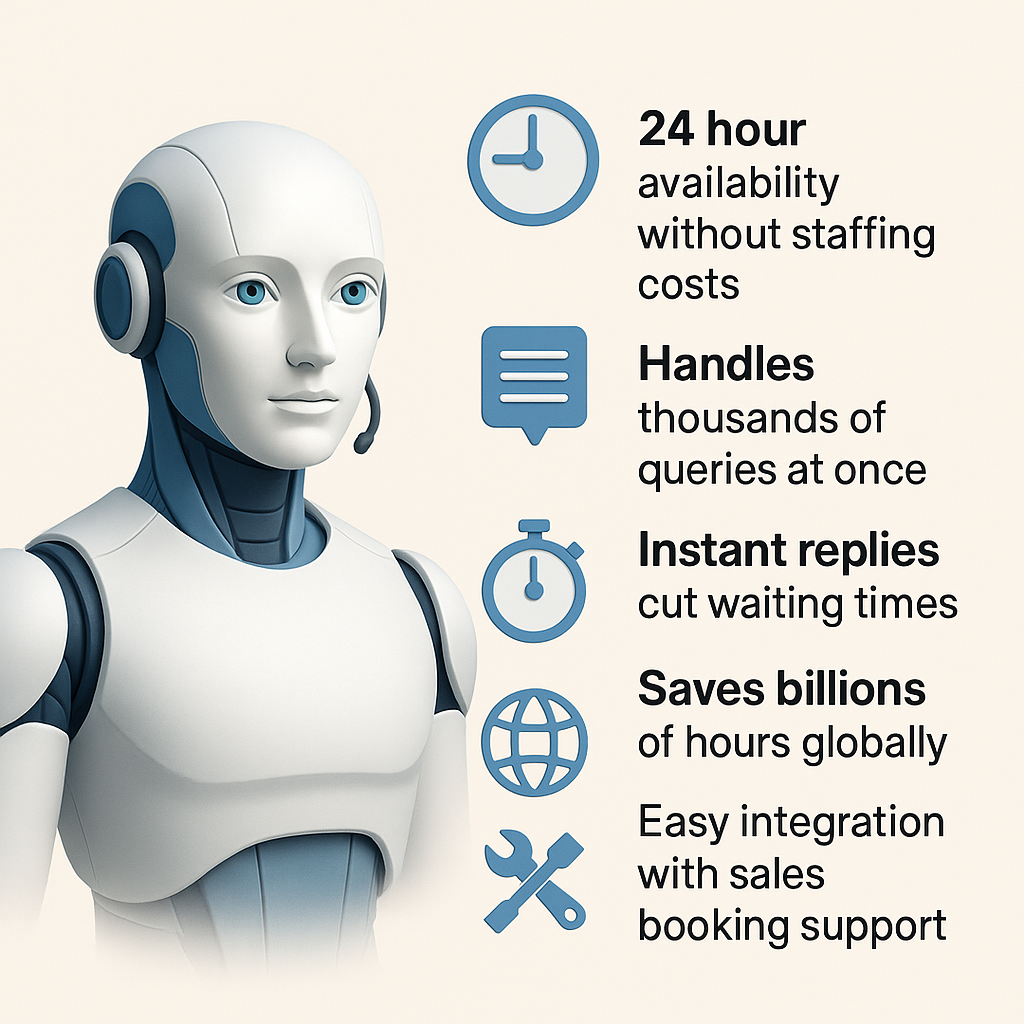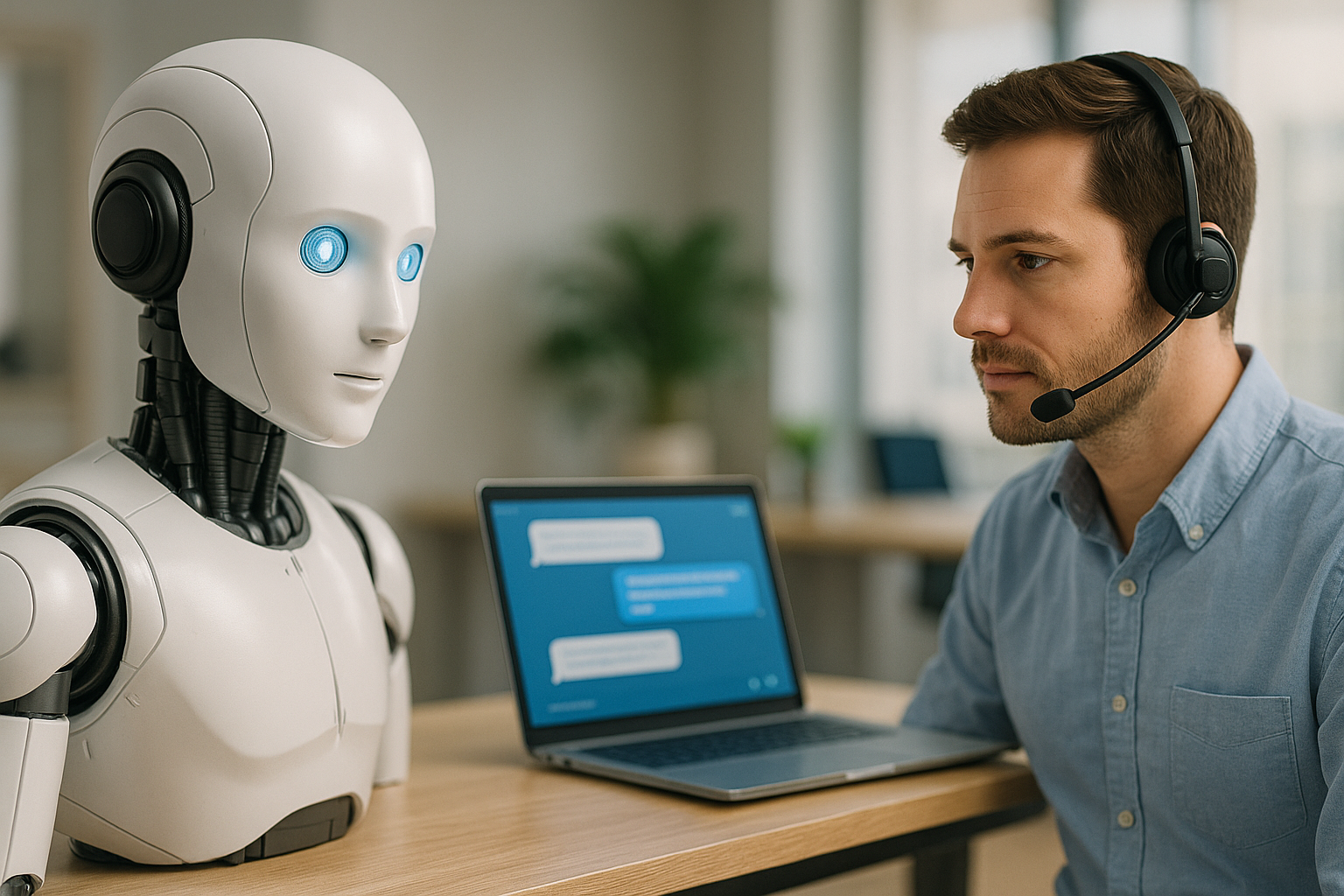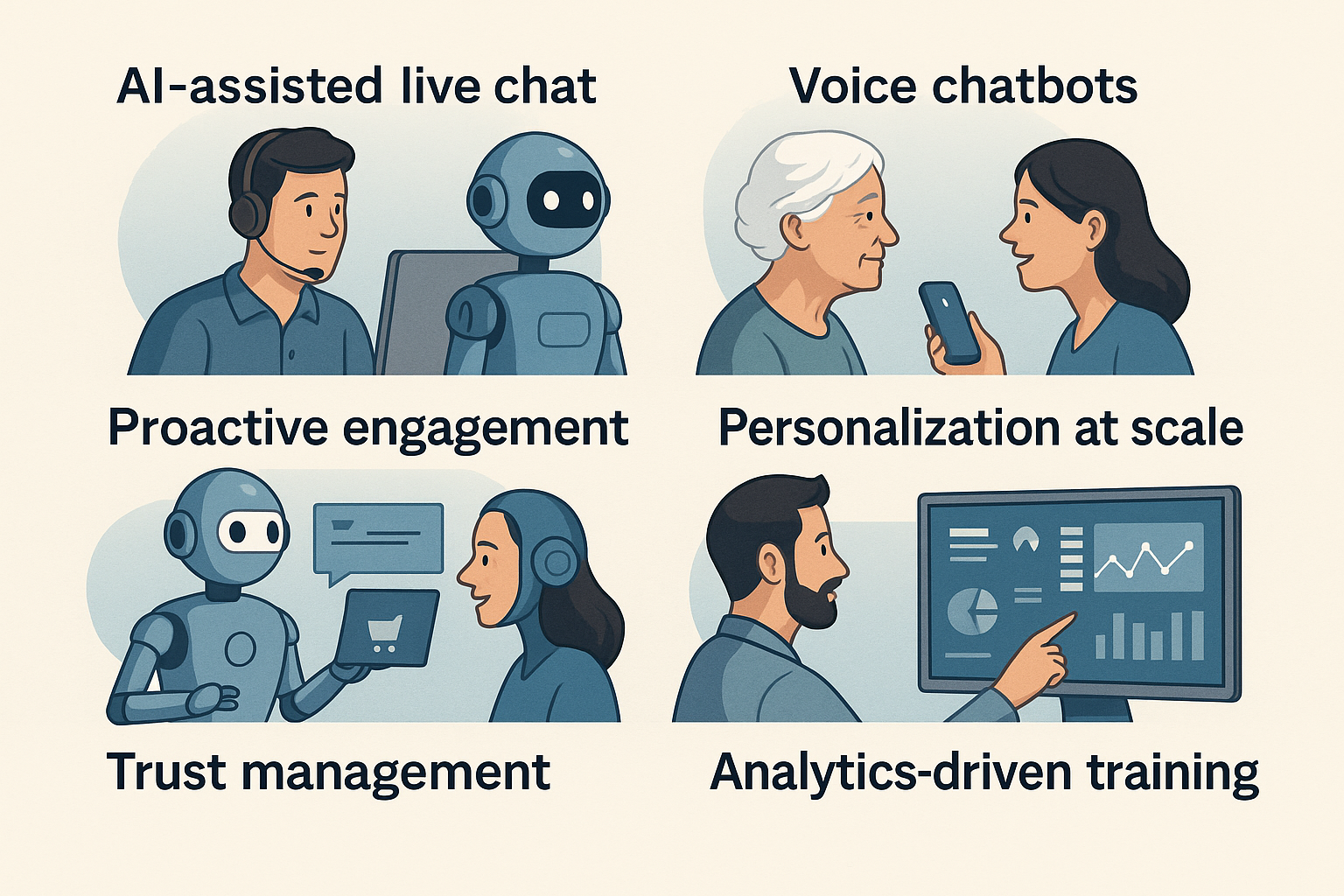In 2025 customer service is undergoing dramatic change. Expectations are higher than ever. Around 88 % of people have interacted with a chatbot in the past year. Yet 42 % still prefer a human when issues feel emotional or complicated. At the same time live chat is far from outdated. Companies report that conversions can rise by 20 % when human agents provide timely support.
This paradox shows why firms must invest in both automation and human care. Chatbots deliver speed and savings, but empathy is still the foundation of trust. Businesses that ignore either side risk losing customers. The question is no longer chatbot or live chat, but how to design systems where both reinforce each other.

Chatbots Growing Smarter and Cheaper for Business
The market for chatbots is expanding at remarkable speed. In 2025 its value already surpasses $10 billion and forecasts suggest it will climb above $29 billion by 2029. Adoption is widespread, with more than 987 million people interacting with chatbots each year. Automation has become routine in e-commerce, banking, and healthcare. Bots can now resolve about 70 % of conversations without the need for human support. This efficiency translates into significant productivity gains, saving companies over 2.5 billion work hours globally.
The business case is clear. Bots reduce operational costs, work 24 hours a day, and scale instantly during peak seasons. They help companies serve international customers across time zones without hiring additional staff. They also standardize replies, which ensures consistency in brand voice. For startups and mid-sized firms, this provides global reach without heavy investment.
Yet challenges remain. Nearly 57 % of consumers have abandoned purchases due to poor chatbot support. Customers complain when bots misunderstand questions, fail to recognize frustration, or trap them in loops. Transparency is vital. People accept bots when companies clearly state what the bot can and cannot do and offer immediate human escalation when needed.
Firms are now adopting more advanced systems to overcome these flaws. Platforms like the Graphlogic Generative AI & Conversational Platform combine conversational AI with retrieval from trusted databases. This method increases accuracy and prevents bots from generating misleading or vague answers. With this improvement, customers receive both speed and reliable information, reducing the risk of dissatisfaction.
Key strengths of modern chatbots:
- Continuous 24 hour availability without staffing costs
- Ability to manage thousands of simultaneous queries
- Instant responses that lower customer waiting times
- Significant global time savings measured in billions of hours
- Easy integration with sales, booking, and support systems

Live Chat Holding Strong in the Era of AI
Even as automation grows, live chat continues to play an essential role. Satisfaction rates in this channel reach 87 %. Customers assisted by humans are 63 % more likely to complete purchases. Quick responses make a major difference: when agents reply within five to ten seconds, satisfaction climbs beyond 84 %.
Live chat offers qualities that bots cannot match. Human agents can detect tone, provide empathy, and adapt answers creatively. In healthcare, live chat is crucial for sensitive discussions such as test results or treatment advice. In finance, it supports advisory sessions that require trust and personal guidance. In retail, agents deliver personalized recommendations that often lead directly to sales.
The downside is cost. Maintaining round-the-clock live chat requires staffing, training, and supervision. During peak traffic periods queues still form, which leads to abandoned sessions. Smaller firms struggle to fund continuous coverage. As a result, live chat works best when targeted toward high value or complex cases rather than routine questions.
Strengths of live chat compared to bots:
- Empathy and nuance that automation cannot provide
- Higher conversion rates when customers receive human advice
- Personal recommendations that build loyalty and trust
- Strong results in healthcare, finance, and premium retail
- Flexibility in handling unusual or sensitive cases
Limitations of live chat:
- Higher operational costs due to staffing
- Limited scalability during peak hours
- Dependency on agent availability and training
Live chat remains indispensable because customers often want to feel understood, not just answered. The most successful companies are those that recognize where live chat creates the most value and deploy it strategically alongside automation.

Why Hybrid Models Outperform Either Option Alone
Many organizations are realizing that neither bots nor human agents alone can fully satisfy today’s demanding customers. By blending automation with human service, companies create a hybrid support system that captures the strengths of both. Chatbots handle routine questions such as order tracking, booking confirmations, and password resets. Human agents step in when conversations involve complexity, emotion, or sensitive decisions. This structure prevents frustration and ensures that no issue is left unresolved. Hybrid systems can reduce average resolution times by 30 %, and customers value not only the speed but also the smoothness of transitions between automated and human replies. Crucially, they avoid repeating their problem when passed to a person, which significantly improves satisfaction.

Technology advancements make this integration more natural than ever. The Graphlogic Text-to-Speech API allows bots to respond with a human sounding voice that increases accessibility, especially for elderly users or people who prefer listening over reading. This feature reduces fatigue and builds trust because interactions feel warmer. Hybrid systems also lower operational costs. Agents spend their time on high impact cases where empathy, judgment, and nuanced reasoning are essential. Meanwhile, bots scale easily to manage peaks in demand, keeping service consistent around the clock.
Industries from retail to healthcare are reporting clear gains from this blend. Retailers adopting hybrid support note fewer abandoned carts and higher conversion rates because quick questions are resolved instantly and buying decisions receive human guidance. Healthcare providers use bots to schedule appointments while agents deliver empathetic communication in sensitive contexts. Financial institutions use bots for basic balance checks but depend on human advisors for investment discussions. This division of labor improves efficiency without reducing quality.
Key advantages of hybrid systems include:
- Speed: bots resolve routine questions instantly, cutting queues during peak hours
- Empathy: humans handle sensitive or complex issues with judgment and warmth
- Cost control: automation manages scale while agents focus only on essential cases
- Consistency: customers experience seamless transfers without repeating themselves
- Accessibility: voice enabled bots improve comfort for diverse user groups
Hybrid support is not only about efficiency. It is about building trust in an era where many consumers feel service is declining. By combining the scalability of AI with the empathy of humans, companies achieve a balance that meets rising expectations and creates loyalty.
Measuring Success in Both Systems
Good service depends on measurement. Without metrics, improvements are random.
Core metrics include:
- First Response Time: live chat replies in under ten seconds deliver 84 % satisfaction
- Average Resolution Time: hybrid systems shorten cases by about one third
- Customer Satisfaction score: direct ratings after each session reveal real impact
Additional metrics that matter:
- Fallback rate: shows how often bots transfer to humans, lower is better
- Agent performance data: highlights quality and empathy of staff
- Peak volume tracking: helps align staffing with demand
- Bot accuracy rate: reveals how often automation gives correct answers
- Escalation reasons: identify recurring cases that bots cannot yet solve
Firms that monitor these indicators can optimize both technology and human work. They reduce costs, improve quality and adapt faster to new consumer habits.

Trends Shaping the Future of Customer Support
Patterns in 2025 are striking. AI already resolves 84 % of customer queries in some industries. This frees staff for creative and advisory roles. But people show fatigue. About 42 % admit they behave more rudely with bots than humans. In the UK 78 % of consumers report frustration with service overall.
Key trends shaping the field include:
- AI assisted live chat: systems suggest replies and detect sentiment in real time
- Voice chatbots: offer accessibility for elderly or visually impaired users
- Proactive engagement: bots initiate chats during checkout or navigation delays
- Personalization at scale: AI recalls previous sessions and adapts responses
- Trust management: companies invest in transparent escalation to maintain loyalty
- Analytics driven training: insights from both bots and humans guide improvements
These developments show that automation must work with empathy. The future lies in personalized systems that save time but still make customers feel heard.
FAQ
Yes for routine needs, but trust declines when a bot cannot escalate. Smooth handoffs protect loyalty.
Chatbots cost less to operate. Live chat requires salaries and training. A hybrid approach balances cost with empathy.
No. Bots manage volume and routine. Humans remain essential for complex, emotional or high value interactions.
Healthcare combines bots for scheduling with agents for patient support. Finance uses bots for account checks and agents for investments. Retail blends bots for tracking with agents for recommendations.
Begin with a chatbot for FAQs, train agents for advanced cases, and ensure clear handoff. Track metrics to refine.
Security is a rising concern. Companies must comply with standards like GDPR and HIPAA. Encrypted sessions and strict data retention rules are essential.
Firms should disclose when customers speak with a bot, avoid manipulative tactics, and guarantee that escalation to a human is always possible. Transparency protects both the customer and the brand.

